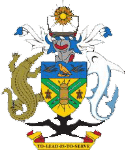Conservation is the act of preserving or protecting natural assets such as plant and animal species, a habitat or an ecosystem service such as mangroves and rainforests for the benefit of current and future generations.
Human consumption and land use practices, as well as other activities bringing about climate change, have all contributed to these natural assets being put under a lot of pressure.
Unsustainable logging and mining practices as well as other development activities have led to diminishing natural rainforests in some parts of the country, increased soil degradation and threats to biodiversity and ecosystems.
Conservation efforts in Solomon Islands are done through legal means, and since the principle of ecosystem management puts forward that biodiversity should be managed at the ecosystem level, the Protected Areas Act 2010 and the Protected Areas Regulations 2012 are the country’s key conservation legislations.
These are supported by the Environment Act 1998 and the Wildlife Protection and Management Act 1998 and their respective Regulations.
Together they give natural assets such as wildlife species, coral reefs and rainforests the legal status they need to be protected from harmful human activities and interests.
All three of these Acts are administered by the Environment and Conservation Division (ECD) of the Ministry of Environment, Climate Change, Disaster Management and Meteorology (MECDM).
At the International level, conservation efforts are primarily encouraged by Multilateral Environmental Agreements (MEAs) such as the United Nations Convention on Biodiversity (UNCBD) and supported by other United Nations conventions such as the Convention Concerning the Protection of the World Cultural and Natural Heritage and the United Nations’ Sustainable Development Goals (SDGs).
The ECD is also responsible for implementing the interests of the UNCBD in Solomon Islands and World Heritage listed sites such as the East Rennell World Heritage Site.
Protected Areas
Protected areas are terrestrial and marine areas that are protected under the Protected Areas Act 2010 and its 2012 Regulation.
They include nature reserves, natural parks, nature monuments, resources management areas, closed areas and World Heritage Sites.
Heritage Sites
A World Heritage Site is a place (such as a building, city, complex, desert, forest, island, lake, monuments or mountains) that is listed by the United Nations Educational, Scientific and Cultural Organization (UNESCO) as being of special cultural or physical significance.
Community Based Resource Management
More than 80% percent of land in the Solomon islands and More than 90% of inshore coastal areas, islands and islets are under customary tenure. Under customary tenure systems particular groups of people (e.g. family units, clans or tribes) have primary rights to access and use these resources.
These rights are in principle, exclusionary, transferable, and enforceable. In Solomon Islands, community-based approaches build on these customary tenure and use rights as the foundations of efforts to manage resources.
By basing CBRM on the structures and systems that are already in place for governing within a community (e.g. customary tenure, chiefly system, other leadership arrangements etc.) management is more likely to be respected, complied with and fit that community’s particular situation.
In addition, there is currently a lack of financial and human resources at the government level to address resource management issues and enforce legislation in rural and remote community settings. The Solomon Islands Government is taking steps to address these capacity shortcomings; however it is recognized that the geographic expanse of Solomon Islands will always present a big challenge to centralized management (i.e. management by the national government).

